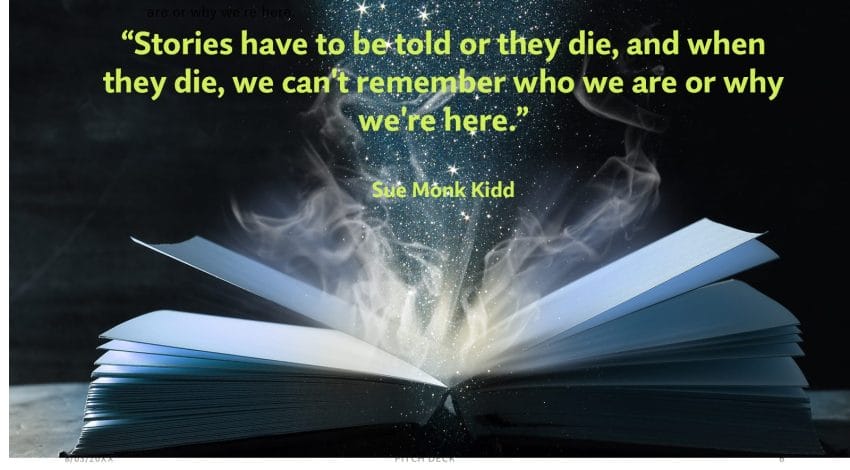Think of the most recent presentation you made to your leadership team. Chances are it was accompanied by a PowerPoint deck which likely included several charts and graphs. They typically do.
But how much of the information had an impact? How well do you think that information will be remembered?
Writers, especially fiction writers, are often encouraged to “show, not tell.” Great writers know how to weave a compelling story that is highly visual and engaging—a story that captures and keeps the attention of their audience.
Storytelling in Leadership
But it’s not just writers who need to have solid storytelling chops. Leaders do too. Why? Because you’re more likely to engage and positively impact your audience if you can tell a good story. We remember stories. They resonate with us. They create imagery that captures our attention and boosts the odds that we’ll remember the message.
Storytelling is a powerful tool for leaders to motivate and engage their teams more effectively. However, many leaders feel uncomfortable with the idea and are ineffective when they try. Some simple tips can help.
Tips for Telling Stories That Resonate
It’s important to use simple, meaningful story techniques when attempting to connect with an audience. Here are some tips to get you started:
- Keep it simple. Don’t overthink it. Instead, be straightforward—use a bare bones approach to delivering your story. Simple is better.
- Make it personal. Personal stories are powerful because they help your audience learn more about you. Stories are a way to make personal connections. Share your own personal experiences, the impact those experiences had on you, and their relevance to your audience.
- Be enthusiastic. Conveying enthusiasm in your story can help engage your audience and hold their attention.
- Use examples that your audience can relate to. Real-life examples can be very impactful.
- Highlight meaningful moments. Share stories that convey important principles or lessons.
- Be concise. Don’t go on and on when telling a story. Hit the high points and make sure the narrative moves along and doesn’t drag.
- Connect your story to leadership goals, mission, vision, and values.
We can all master the art of telling meaningful stories—including you.
Leaders don’t always feel confident in their storytelling abilities. That’s why we’re presenting a session on “Mastering Storytelling: The Healthcare Leader’s Guide to Engaging Hearts and Minds” on March 4. We’ll break down the most crucial element of storytelling and provide a simple-to-follow framework for using stories to connect with your audiences in impactful ways.
Tags: culture, healthcare culture, healthcare leadership, Leadership, Organizational Culture, storytelling, storytelling for leaders

